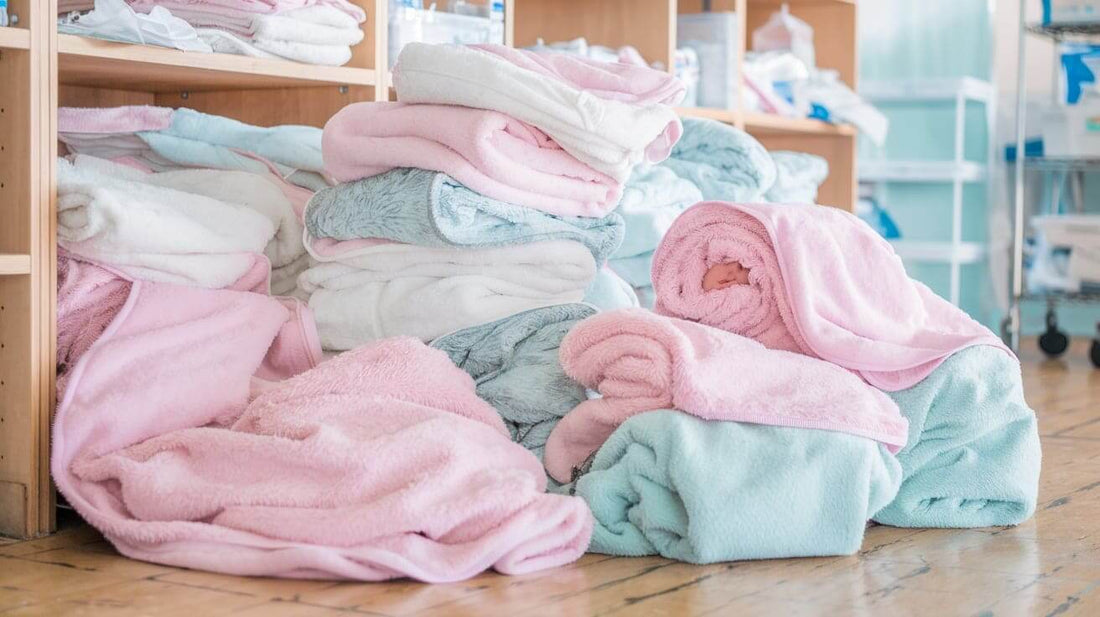What Are Receiving Blankets for Babies? A Complete Guide for New Parents

Welcoming a newborn into your family is an exciting time, but it can also be overwhelming when it comes to preparing all the necessary items. One essential item that often confuses new parents is the receiving blanket.
What Are Receiving Blankets?
Receiving blankets are versatile, lightweight blankets typically used for newborns and infants. Receiving blankets are usually made from breathable materials like cotton or muslin and come in various sizes, though they're generally smaller than other baby blankets.
The term "receiving blanket" originates from the tradition of wrapping newborns in these blankets when they're first "received" into the world. However, their uses extend far beyond this initial purpose.
Uses of Receiving Blankets
Baby receiving blankets are incredibly versatile and can serve multiple purposes:
-
Swaddling: Many parents use receiving blankets to swaddle their newborns, mimicking the snug feeling of the womb.
-
Burp cloth: The absorbent material makes them excellent for catching spit-up during burping sessions.
-
Nursing cover: They provide privacy for breastfeeding mothers in public settings.
-
Changing pad: In a pinch, they can serve as a clean surface for diaper changes.
-
Light cover: They're perfect for providing a bit of warmth without overheating the baby.

How Many Receiving Blankets Do You Need?
The number of infant receiving blankets you'll need can vary based on your lifestyle and laundry habits. However, a general guideline is to have 4-8 receiving blankets on hand.
This quantity allows for regular use and washing without running out. Remember, babies can be messy, and you might go through several blankets in a day.
Receiving Blankets vs. Crib Blankets
While both are used for babies, receiving blankets and crib blankets serve different purposes:
Receiving Blankets
- Smaller and lighter
- More versatile in use
- Ideal for swaddling and on-the-go needs
- Usually made of thinner, more breathable material
Crib Blankets
- Larger and often thicker
- Designed primarily for warmth in the crib
- Not suitable for swaddling due to size
- May be made of heavier materials like fleece or knitted fabrics
It's important to note that the American Academy of Pediatrics recommends against using loose blankets in the crib for babies under 12 months due to the risk of SIDS. Instead, they suggest using sleep sacks or wearable blankets for crib use.
Can Receiving Blankets Be Used After the Newborn Stage?
Receiving blankets are incredibly versatile and can be repurposed long after the newborn stage. Many parents creatively use them as toddler hand towels, art smocks to protect clothes during messy play, or cozy blankets for dolls. Their softness and durability also make them excellent materials for quilting, allowing you to create lasting keepsakes from these cherished baby items.
What's the Ideal Fabric Weight for Receiving Blankets in Different Seasons?
The ideal fabric weight for receiving blankets varies with the seasons. For summer, opt for lightweight muslin or single-layer cotton blankets with a weight around 120-180 GSM (grams per square meter). These lighter fabrics allow for better air circulation, helping to prevent overheating. In winter, choose flannel or double-layer cotton blankets weighing 200-250 GSM for extra warmth while maintaining breathability.
How Do You Maintain the Softness of Receiving Blankets Through Multiple Washes?
To keep your receiving blankets soft through multiple washes, add 1/2 cup of white vinegar to the rinse cycle as a natural fabric softener. Avoid commercial fabric softeners, which can leave residue and reduce absorbency. Dry the blankets on low heat to prevent fiber damage, and consider line-drying in sunlight occasionally to naturally soften and sanitize the fabric.
Are Organic Receiving Blankets Worth the Extra Cost?
The value of organic receiving blankets depends on your specific needs and concerns. They may be worth considering if your baby has particularly sensitive skin or if you're worried about chemical processing in fabric production. However, high-quality conventional cotton blankets, when properly washed, are also perfectly safe for most babies. Consider your family's needs, budget, and personal values when making this decision.
What Size Should a Receiving Blanket Be for Effective Swaddling?
For effective swaddling, a receiving blanket should be at least 40x40 inches. This generous size allows for proper wrapping, even as your baby grows. Smaller blankets, around 30x30 inches, can work well for other purposes like burping or as a light cover, but may be challenging when trying to swaddle larger or more active babies.
Can Receiving Blankets Replace Burp Cloths Entirely?
While receiving blankets can function as burp cloths, they may not be the ideal replacement in all situations. Dedicated burp cloths are often more absorbent and shaped to stay on your shoulder more easily. However, receiving blankets' larger size can provide more coverage. It's beneficial to have both on hand for different situations, ensuring you're prepared for all your baby's needs.

